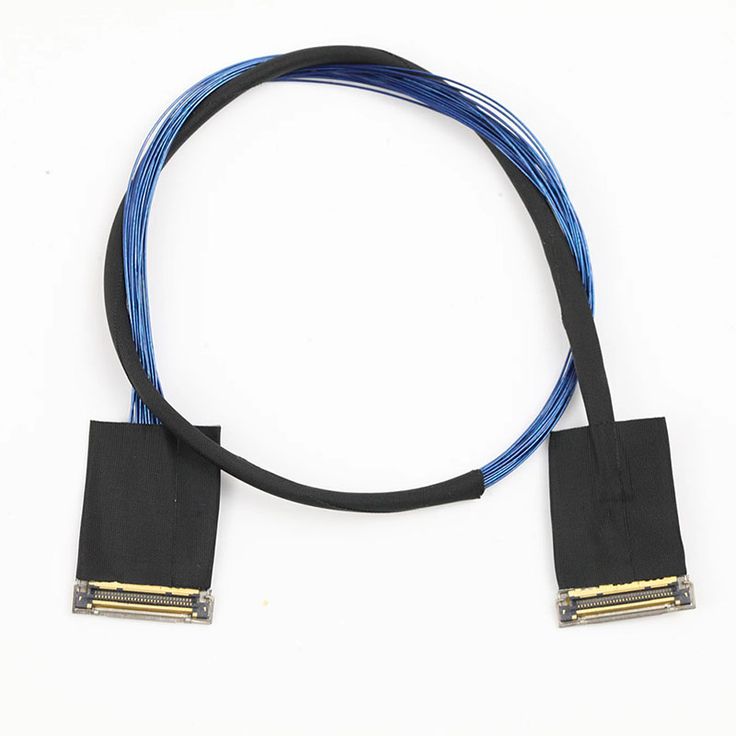A Flexible Coaxial Cable Assembly and FFC/FPC Cable serve different purposes, but both are commonly used in a variety of electronic applications, particularly in industries like automotive, robotics, medical devices, and consumer electronics. Here’s a breakdown of each:
Flexible Coaxial Cable Assembly
A flexible coaxial cable assembly consists of a coaxial cable with specific connectors at each end, designed for flexibility and high-frequency signal transmission. These are typically used in applications where the cable needs to bend or move without damage, like in robotics, medical devices, or mobile electronics.
Key Specifications of Flexible Coaxial Cable Assembly:
| Specification | Details |
|---|---|
| Cable Type | Coaxial (with flexible design for easy routing and movement) |
| Conductor | Typically copper or tinned copper for signal transmission |
| Insulation | Dielectric material, like PTFE or FEP, for electrical insulation |
| Shielding | Foil or braided shielding to reduce EMI and protect signal integrity |
| Outer Jacket | Flexible PVC, TPE, or another material for durability and flexibility |
| Operating Frequency | High-frequency, up to several GHz depending on the cable design |
| Signal Type | Differential (usually for LVDS, RF signals, or similar high-speed data) |
| Connectors | Can vary from SMA, BNC, or micro-coaxial connectors, depending on use case |
| Temperature Range | Typically from -40°C to +85°C (depends on materials used) |
| Cable Flexibility | Designed for repeated bending and dynamic movements |
| Application | RF signal transmission, video, data, or other high-frequency applications |
Use Cases:
- RF communication systems.
- Medical devices (e.g., imaging systems).
- Consumer electronics (e.g., TV antennas).
- Robotics (where cables need to flex with movement).
FFC (Flexible Flat Cable) / FPC (Flexible Printed Circuit) Cable
These are flat, flexible cables used to transmit electrical signals between components in devices that require thin, space-saving, and flexible interconnections. FFC and FPC cables are often used in flat-panel displays, laptops, smartphones, and other compact electronic devices.

Key Specifications of FFC/FPC Cable:
| Specification | Details |
|---|---|
| Cable Type | Flexible flat cable (FFC) or flexible printed circuit (FPC) |
| Conductor | Typically copper or tinned copper, with traces printed on an insulating film |
| Insulation | Polyimide or polyester film, providing flexibility and insulation |
| Pitch | Typically from 0.3mm to 1.25mm (spacing between conductors) |
| Thickness | Thin and flexible, typically between 0.2mm and 1mm |
| Conductor Plating | Tin or gold-plated copper for better conductivity and durability |
| Shielding | May or may not have shielding (often unshielded for internal, low-frequency applications) |
| Connector Type | FPC connectors or ZIF (Zero Insertion Force) connectors |
| Operating Voltage | Typically 3.3V, 5V, or 12V (depends on the application) |
| Temperature Range | -20°C to +85°C (typical for consumer electronics) |
| Application | Internal connections in displays, laptops, smartphones, and other compact electronics |
| Stripped Lengths | Customizable for specific application requirements (usually defined by customer) |
Use Cases:
- LCD/LED Displays: Connecting screens to the motherboard or other circuit boards.
- Smartphones & Laptops: For internal connections between components.
- Consumer Electronics: Where space-saving and flexible connections are essential.
- Medical Devices: For internal wiring that needs to flex and bend without losing functionality.
Comparison:
| Feature | Flexible Coaxial Cable Assembly | FFC/FPC Cable |
|---|---|---|
| Flexibility | High (designed for dynamic movement) | Very High (flat, thin, and flexible) |
| Signal Type | Typically RF, LVDS, or other high-speed differential signals | Typically low-voltage digital signals |
| Shielding | Yes (foil or braided shielding for EMI protection) | Not always (but some variants are shielded) |
| Applications | High-frequency transmission (RF, video signals) | Internal connections in compact devices |
| Thickness | Typically thicker (depends on application) | Very thin and space-saving |
| Temperature Range | Wider range, depending on materials (often up to 100°C) | Usually -20°C to +85°C |
Both cable types have their distinct roles in electronic systems: flexible micro coaxial cable assemblies are better for high-frequency and RF signal transmission, while FFC/FPC cables are more suited for compact and flexible internal connections in low-voltage, digital signal environments.


Comments are closed